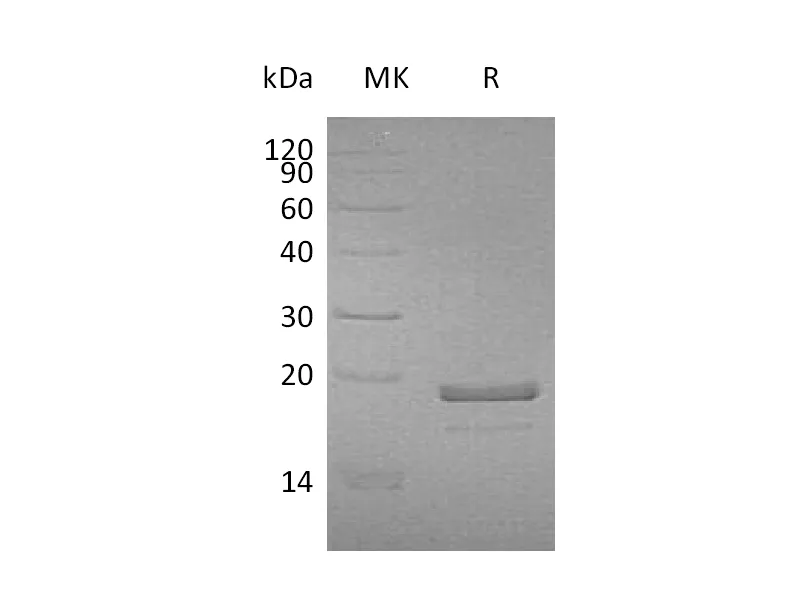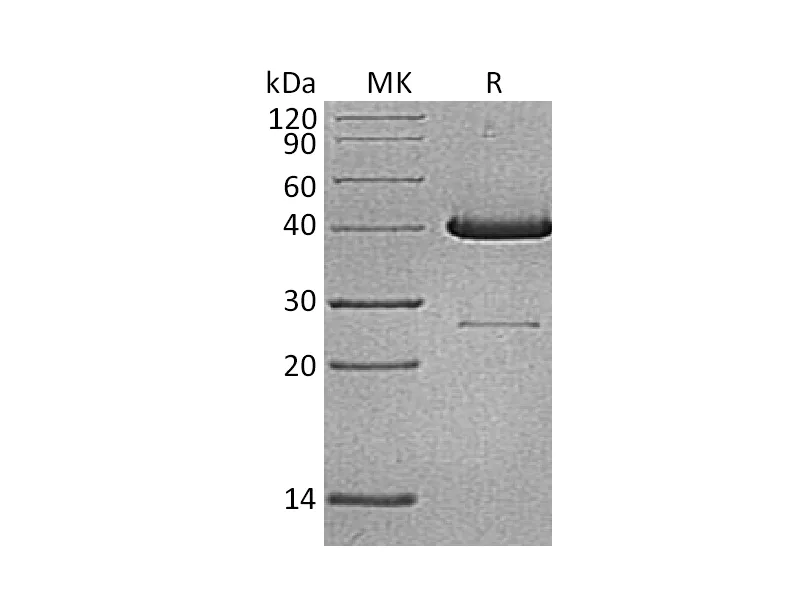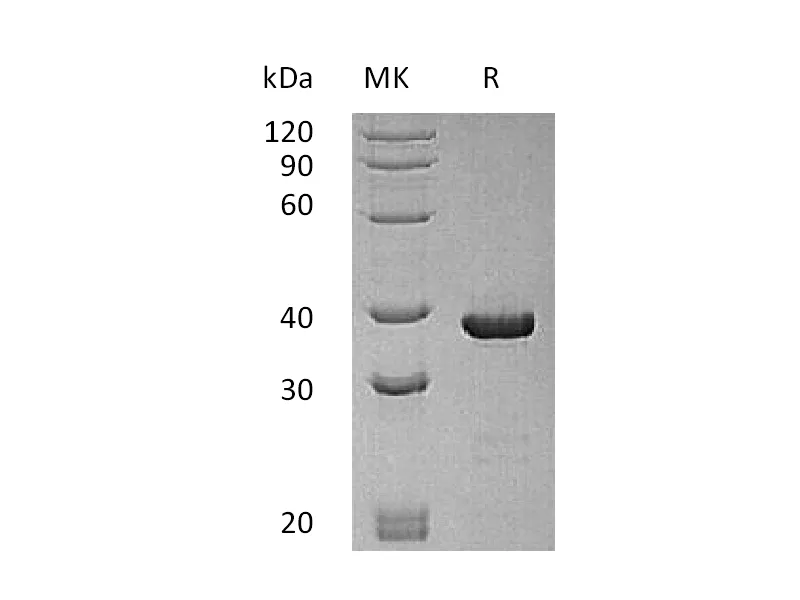| 产品名称 |
Recombinant Human S100A16 |
| 英文名称 |
S100A16 |
| 纯度 |
Greater than 95% as determined by reducing SDS-PAGE |
| 内毒素 |
<1 EU/µg as determined by LAL test. |
| 蛋白构建 |
Recombinant Human Protein S100-A16 is produced by our E.coli expression system and the target gene encoding Met1-Ser103 is expressed. |
| Accession |
Q96FQ6 |
| 表达宿主 |
E.coli |
| 种属 |
Human |
| 预测分子量 |
11.8 KDa |
| 制剂 |
Lyophilized from a 0.2 μm filtered solution of 20mM Histidine-HCl, 6% Trehalose, 4% Mannitol, 100mM NaCl, 0.05% Tween 80, pH 5.5. |
| 运输方式 |
The product is shipped at ambient temperature.Upon receipt, store it immediately at the temperature listed below. |
| 稳定性&储存 |
Store at ≤-70°C, stable for 6 months after receipt.Store at ≤-70°C, stable for 3 months under sterile conditions after opening. Please minimize freeze-thaw cycles. |
| 复溶 |
Always centrifuge tubes before opening.Do not mix by vortex or pipetting.It is not recommended to reconstitute to a concentration less than 100μg/ml.Dissolve the lyophilized protein in distilled water.Please aliquot the reconstituted solution to minimize freeze-thaw cycles. |
| 分子别名 |
| Protein S100-A16; Aging-associated gene 13 protein; Protein S100-F; S100 calcium-binding protein A16; S100A16; S100F; AAG13 |
| 背景介绍 |
| S100A16 is a member of S100 protein superfamily that carries calcium-binding EF-handmotifs. S100 proteins are cell-and tissue-specific and are involved in many intra-and extracellular processes hrough interacting with specific target proteins. S100A16 expression was found to be astrocyte-specific. The S100A16 protein was found to accumulate within nucleoli and to translocate to the cytoplasm in response to Ca(2+) stimulation. The homodimeric structure of human S100A16 in the apo state has been obtained both in the solid state and insolution, resulting in good agreement between the structures with the exception of two loop regions. The homodimeric solution structure of human S100A16 was also calculated in the calcium(II)-bound form. Immunoprecipitation analysis revealed that S100A16 could physically interact with tumor suppress or protein p53, also a known inhibitor of adipogenesis. Overexpression or RNA interference-initiated reduction of S100A16 led to the inhibition or activation of the expression of p53-responsivegenes, respectively. S100A16 protein is a novel adipogenesis-promoting factor. |
注意事项
本司产品仅用于科研,不用于临床诊断和治疗




